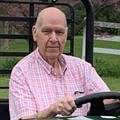
A few weeks ago, while visiting a rural homeowner, I was looking at some eastern red cedars and there were some brown balls hanging from the branches.
Now I am not a fan of eastern red cedars. They may be native to America but not here in our neck of the woods. The pioneers coming into this deciduous hardwood forest for the first time in the early 1800s would have found this tree confined principally to the bluffs of streams and rocky ravines according to Charles Deam who wrote “Trees of Indiana” in 1921. By the time Deam wrote the book, Indiana land coverage had gone from 87% trees to 8%. This opening up of the forest allowed the cedar more area to grow.
Today I see this tree growing everywhere including outside my office window. On my place, I cut them down. Out in the prairies of Nebraska, the native eastern red cedar has taken over rangeland, reducing grasses and the wildlife associated with grass plants. Without the massive prairie fires, this tree is expanding in numbers and has covered around 75% of the landscape in some areas. One article I read on this plant ended with “….cedar trees are awful. They take resources away from the native species of the Plains, displace native wildlife.”
I do not like them, but here in Indiana I would not call them awful yet. I do see it coming up along the highways here in our community and its numbers are sprouting especially around interchanges. I do have farmers that have concerns about their spreading. Just this week I saw a thin stand of woods starting to experience cedar tree growth. It is a tough tree and looking to get a hold in open areas.
One other bad characteristic of these trees goes back to those brown balls. They are actually a mass packed with fungal spores. Spring rains cause the ball to swell and turn into a gelatinous orange mass with structures known as telial horns protruding from it. Those spores find their way to newly emerging apple leaves and infect the plant so that leaves have an orangish spot that grows through the leaf bottom with little tubes attached.
This is called cedar apple rust. There are also conditions caused by similar organisms called Cedar-Quince rust and Cedar-Hawthorn Rust.They can affect the apple tree production but they do no harm to the cedar. Picking those balls off the cedar in the spring can reduce the disease on apples but it’s hard to get them all.
There are fungicides for apple trees that will prevent the disease but there is no use trying to protect the cedar. Any serious apple orchardist will remove any cedars within view and further as the spores could travel several miles if the wind is right. But in that situation, a few spores may show up versus having an infected cedar tree in the same yard.
I marvel at this disease as it has found a way to use two hosts to survive. There are so many amazing wonders of this world. Even though cedar apple sure is really kind of pretty, it's not healthy. In general, having cedar trees around is not a good idea.






